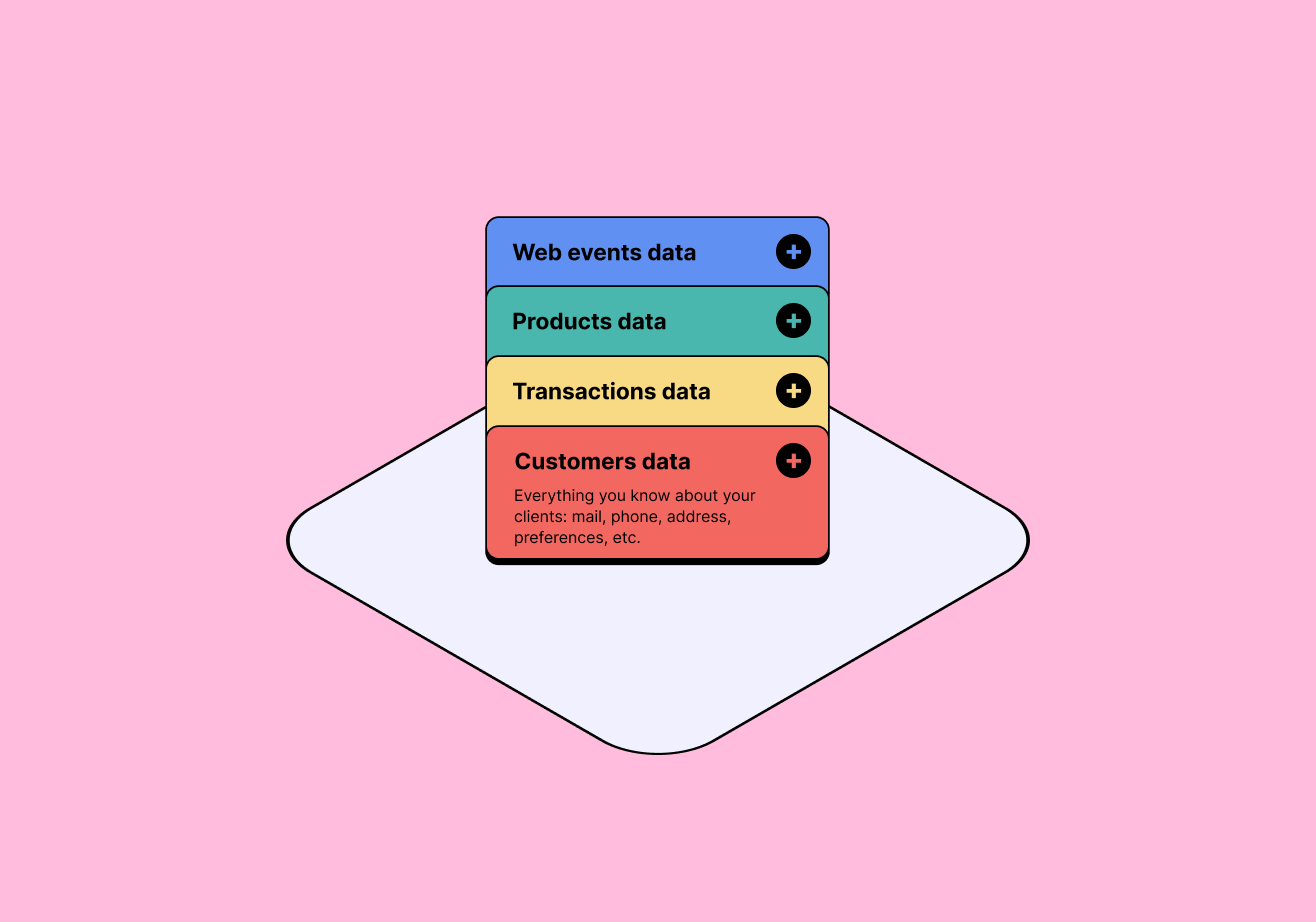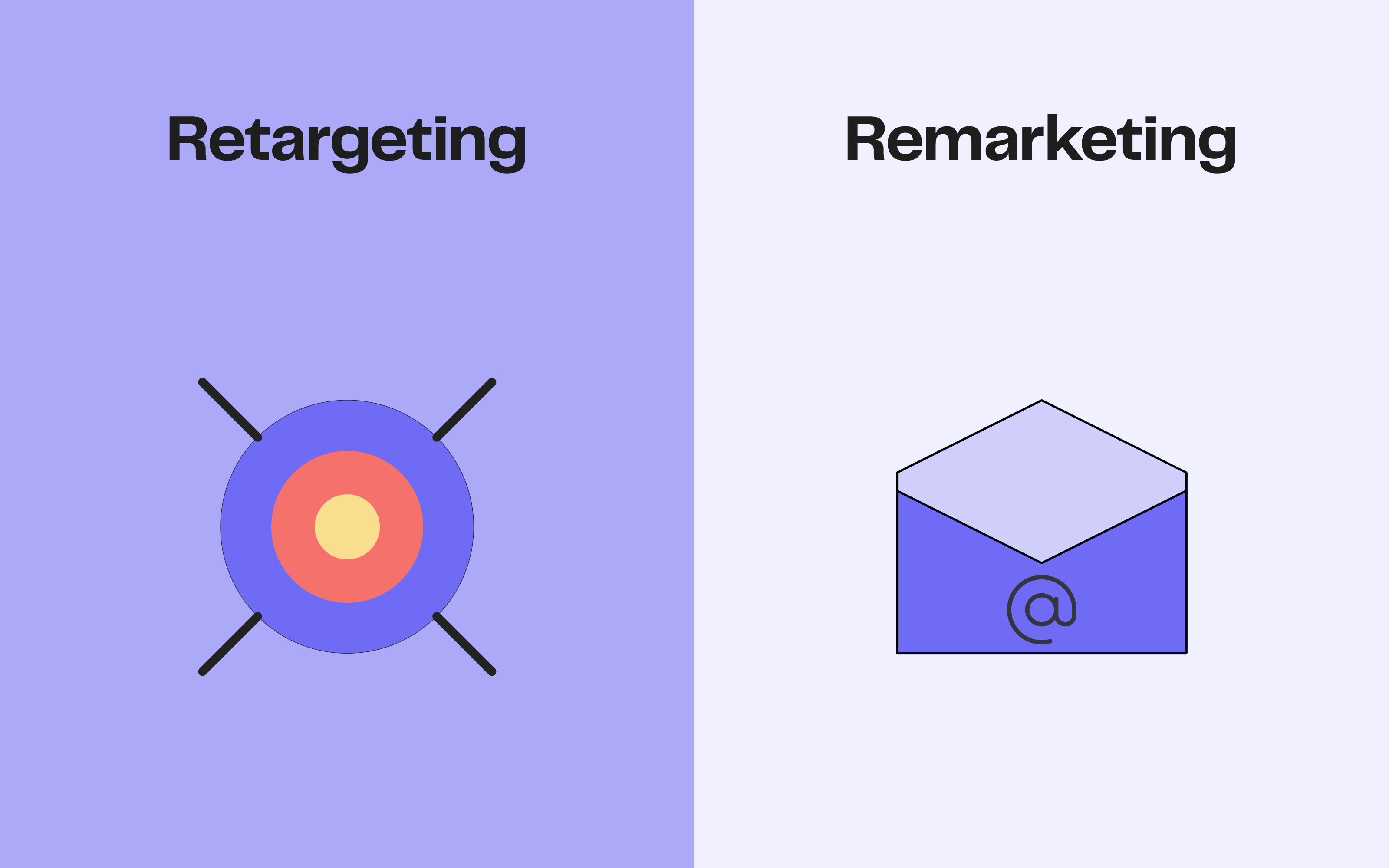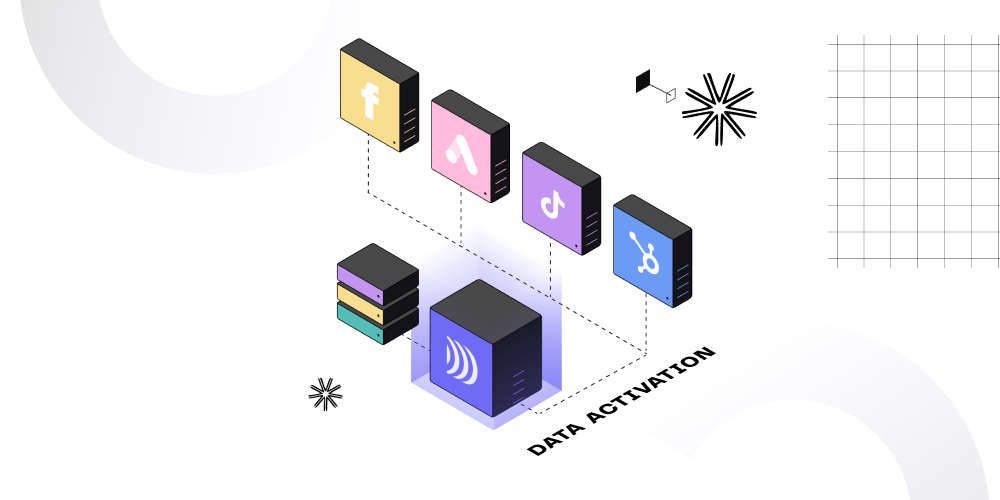
Step-by-step guide to Data Activation
5min • Last updated on Jun 10, 2025

Yomna Sfaxi
Growth & Marketing Manager
For marketers, obtaining timely and accurate insights from data and achieving a comprehensive 360° view of customers have become top priorities. By doing so, they can create personalised experiences that resonate with their target audience.
Data Activation is the key to achieving these objectives, which involves the extraction of valuable customer insights from data and taking action based on them. This blog post provides simple steps for carrying out Data Activation effectively.
1. Data is everywhere but should not be sitting
Data is everywhere. Or let's rather say most of the activities related to your business generate data. For instance website visitors leave traces collected by your server or, when still possible, by some cookies.
You also have sales data, market research data, social media data, etc.
Traditionally, data has been stored - in various applications, or a centralised storage, call it a database, data lake, data warehouse, etc. They are all static storage systems. Your data sits somewhere.
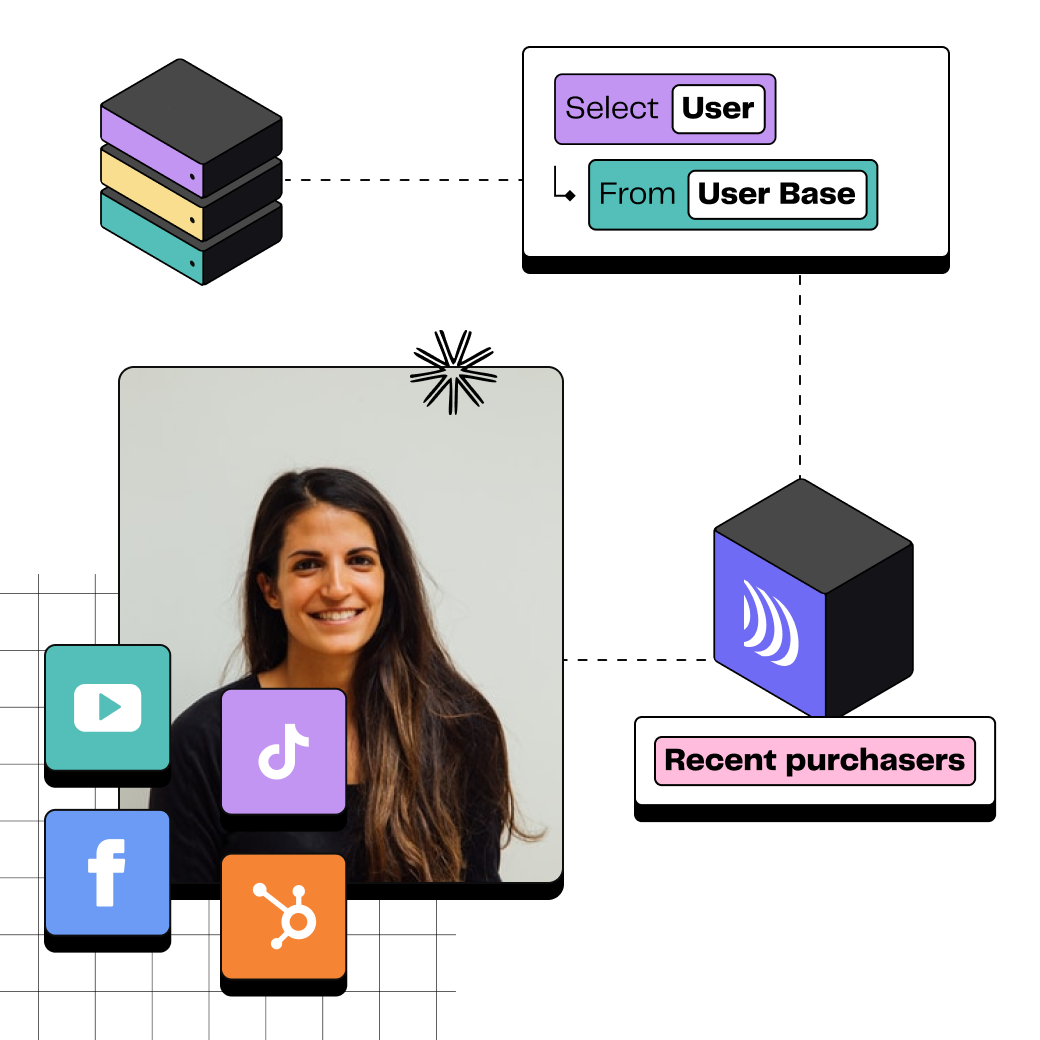
Recent purchasers segment can form a high LTV audience
By putting it in motion, you can achieve much more. Motion is when you transfer the data, process it and analyse it in real time. This opens up the way to more precise and real-time customer engagement, along with other types of use cases such as fraud detection that we won't discuss here.
Here we will not go through the technologies and frameworks that enable data in motion, such as real-time data streaming, event-driven architectures, and microservices. We will look instead at the steps to make sure your choices will lead to the right solution for your business.
2. Start by setting clear objectives
We like to start by looking at where we want to land. During the whole journey you will benefit from knowing where you are heading so you do not engage in the data avenues without a clear direction. What is it you want to achieve with their data activation strategy?
This could be, for example:
Increasing your acquisition conversion rates,
Improving customer engagement and leading to upselling and/or cross-selling,
Or boosting customer retention.
This will help you know where you are heading but most importantly, define how to measure your performance. In our perspective, this is crucial as you both do not want to engage in such activity with a low ROI and will certainly work on improving it.
You can't improve what you don't measure.
Peter Drucker
3. Ensuring you have the right data quality
Just like in any system, you can only get something as good as what you feed it with. If your input is not clear or accurate or compatible with the rest, you can't do much.
Take for instance CRMs. They have a wealth of data on what customers and prospects do or want. Their flaws often reside in the manual updating of information or the diverse flows of data feeding them, sometimes creating duplicates.
And you probably do not want to activate the same person twice. To ensure the quality of your data, it is therefore essential to invest time and resources in tools that will guarantee the reliability of its collection.

Data Quality Metrics
4. Set up an agile and scalable data infrastructure
To effectively activate data, you need to be able to manipulate it. That is to say, storing the data, being able to access it instantly wherever it is, eventually modifying it or enriching it, moving it around, and sending it to a destination where it will be “activated”.
This is where you need to start with a solid data infrastructure, which often has a data warehouse at its core and robust connections. Check all requirements for data activation in our dedicated resource.
👉🏼 If you need help, we've summed up all the best tools for activating data.
It is important that you ensure your data infrastructure scales. In our experience, businesses tend to add additional types of data over time. Unfortunately, this is not always the case with some Customer Data Platforms (CDPs), so be careful when planning your projects!
For example, a marketing team might start by activating using Google and then add Facebook, Tiktok, Snapchat, Instagram, etc. over time. When you factor that into the growth of your business, it can create fast-growing data needs. The good news is most modern storage such as Google’s BigQuery or Snowflake scale naturally.
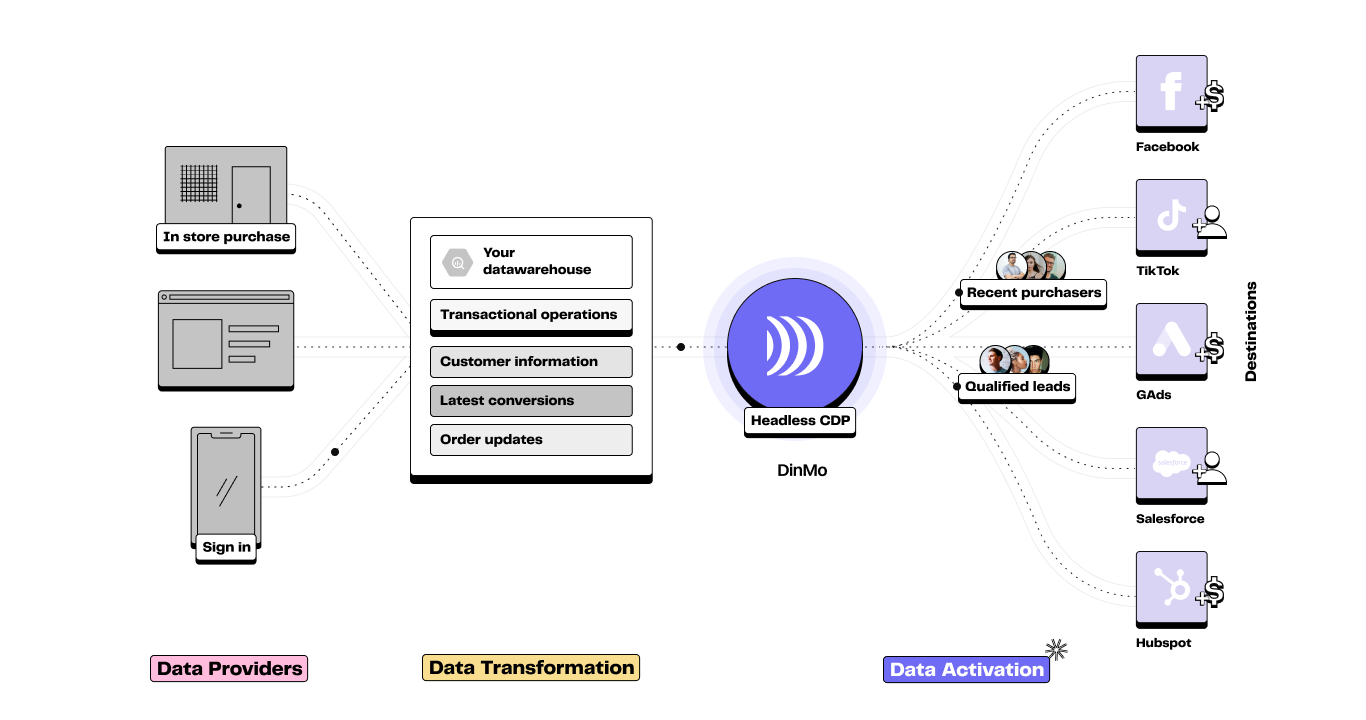
Data Activation
5. Orchestrate your data to grow the business
Now the stage is set, you can raise the curtain and start growing your business. As you want to engage in specific actions to reach your business objectives, you should be able to segment your customer base on your own and iterate quickly and autonomously with your tools.
Define your offer (ex: "1 month free"), then select the customers (churned customers back on a free usage), and send that segment to an activation platform (for example with a personalised email).

At risk customer
Next is to measure the results and start over by modifying or testing something different. We get into a typical test-and-learn cycle. It is crucial you do not depend upon another team to accomplish your tasks.
If every time you need to extract a custom segment you need to get a data analyst to run a query, you have friction and time lost waiting. A simple click has to enable you to then activate it, stop activating it, add another destination, etc.
At DinMo we believe you should be fully autonomous in building segments or audiences that you activate.
This orchestration layer for building segments and then moving them to activation platforms has to remain independent. It has to connect to your data but has no reason to store it.
It will understand the schema of the data, and its topology, helping you choose among the technical names of the data tables. It should allow you to write in plain English what you want to do: “customers who bought last week”.
And then instantly build bridges to keep synchronisation with the activation platform. So when your segment changes, the people who are not in it anymore stop being engaged (ex: retargeting should not target those who just became customers).
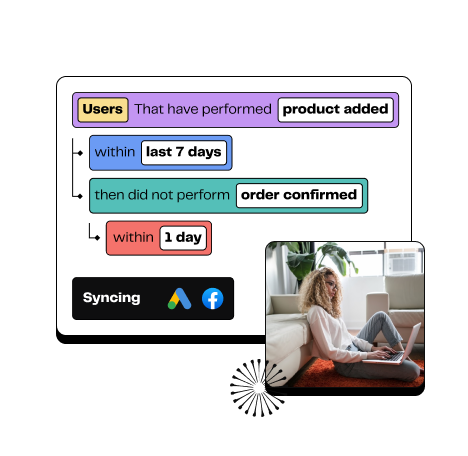
Example of a user segment
6. Be "ETL": Ethical, Transparent and Legal
Regulatory frameworks like GDPR have highlighted the importance of respecting personal data. One must make sure strategies are ethical, transparent, and legal. There is no negotiation on this last point, we need to comply with the law in terms of privacy regulations.
For instance, you do not need to send personal data about your customers to the ad platforms. An encrypted email works with all platforms we work with.
Transparency means you give the right information about what you are about to do with the data collected. That requires maintaining up-to-date information on what you do with the data, and how you collect and store it. This also applies to what you do to ensure the security of the data and how you react in case of a data breach.
Lastly, we strongly believe data, especially that collected on your customers, should be used ethically. Short ROI is important but can not rule it all.
Governance has to be set on the usage of the data, including several perspectives from the company. Your teams using data are accountable for how they do it, not only for the ROI it generates.
To sum it up, putting your data in motion is an amazing business enabler. Once you know where you want to go, you need to lay solid foundations for your data: a robust and agile infrastructure that can scale and evolve.
Then your business team needs to be autonomous in manipulating the data and iterating fast to reach a quicker optimal business use case. This opens up the way to very powerful marketing and should be safeguarded by complying with the law and your way of doing business.
At DinMo, we are passionate about what data in motion does and we would love to continue that conversation with you.













